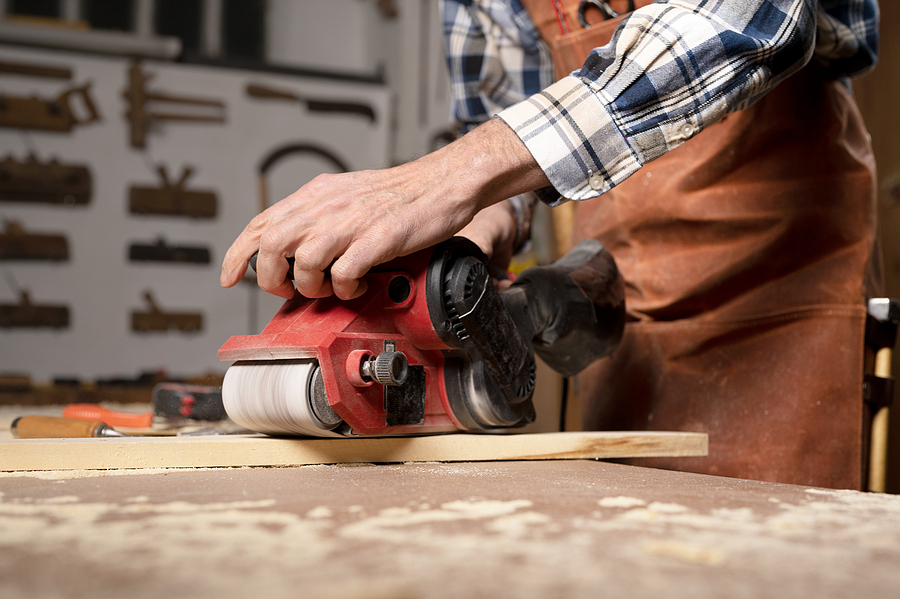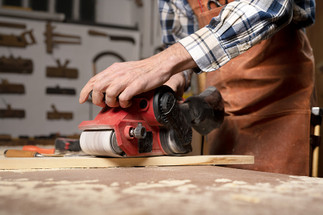Posted by Sandpaper America on Dec 19th 2022
Introduction to Belt Sanders
Belt sanders are one of the most versatile power tools in a woodworker's shop. They can be used for everything from rough sanding to finishing. In this post, we will discuss the different types of belt sanders, how to use them, and some tips on getting the best results.

Facts About Belt Sanding Machines
Belt sanders are an invaluable tool for any homeowner who is serious about DIY projects. They can be used to smooth wood quickly and easily, in addition to sanding down ridges or cutting through tough material like metal. Belt sanders consist of a belt moving over two motor-powered drums that have abrasive grit attached to them. This belt rotates at a given speed and can be adjusted to press forward into the material in order to adjust for the desired amount of pressure or efficiency needed for the job at hand. Belt sanders are accessible tools that can make quick work of even tough materials; allowing you to take on big DIY projects with confidence!
Types of Sanding Belts
There are three primary types of sanding belts: aluminum oxide, silicon carbide, and zirconia alumina. There are also garnet sanding belts that are perfect for fine wood sanding. Aluminum oxide sanding belts are great for wood and metal, while silicon carbide is bets for things like ceramics, rubber, glass, marble, and even stone. For harder metals like stainless steel and cast iron, zirconia alumina is the go-to sanding belt.
Common Uses for a Belt Sander
A belt sander is one of the most versatile tools for any DIY'er or professional carpenter. Not only can it be used to quickly sand large, flat surfaces, but it can also be used to round off sharp edges and curves or to remove paint from a variety of surfaces. Additionally, belt sanders are great for polishing different materials like metal or plastic, as well as finishing furniture such as countertops and tables. With their flexible belts and powerful motors, belt sanders are an important tool in any home improvement arsenal.
How to Operate a Belt Sander
Using a belt sander is an easy, productive way to level out wooden surfaces and smooth out imperfections. Whether you're a homeowner with a few DIY projects or a professional contractor taking on the job of sanding down lumber, belt sanders can get the job done at lightning speed.
To begin, make sure your belt sander’s belt tension adjustment is set correctly and lubricate the belt sander if necessary. As you use your belt sander move it over the grains instead of against them, keeping it as level as possible with each pass. Always wear protective goggles when using the belt sander and unplug it after use for optimum safety. Finally, make sure to keep an eye on your work so you do not unintentionally cause damage to your materials.
Safety Tips for Belt Sanding
Before you use a belt sander, it is important to make sure that you have the proper safety gear on. Things like goggles and a dust mask to protect your eyes, nose, and throat from flying debris should be worn. Additionally, belt sanders should always be used with proper ventilation. It's also important to read the instructions or safety pamphlet that comes with your belt sander and become familiar with how it works.
Knowing what speed setting is right for different materials is essential when using a belt sander, so test out the belt on scraps first if possible. Keeping control of the belt sander while in use is key to ensuring that surfaces are evenly sanded without any deep gouges or scratches; make sure you always keep steady pressure against the surface while having firm footing at all times. Following these tips will help ensure a successful belt sanding project!
Where to Get Top Quality Sanding Belts and More
Sandpaper America is your one-stop shop for custom sanding supplies and quality sanding belts. Our expert team of professionals are dedicated to providing high-quality materials designed to last longer and perform better than any competitor on the market. We source only the best raw materials that have been tested to ensure they withstand even the toughest jobs. With our reliable products, we can guarantee you’ll get the job done right. Contact us at 1-800-860-7263 (SAND) to learn more about our sandpaper products or to place an order, today.
Related Posts:
How
to Take Care of Sanding Belts
Advice
for Operating a Portable Belt Sander
Tips
for Using a Stationary Belt Sander

